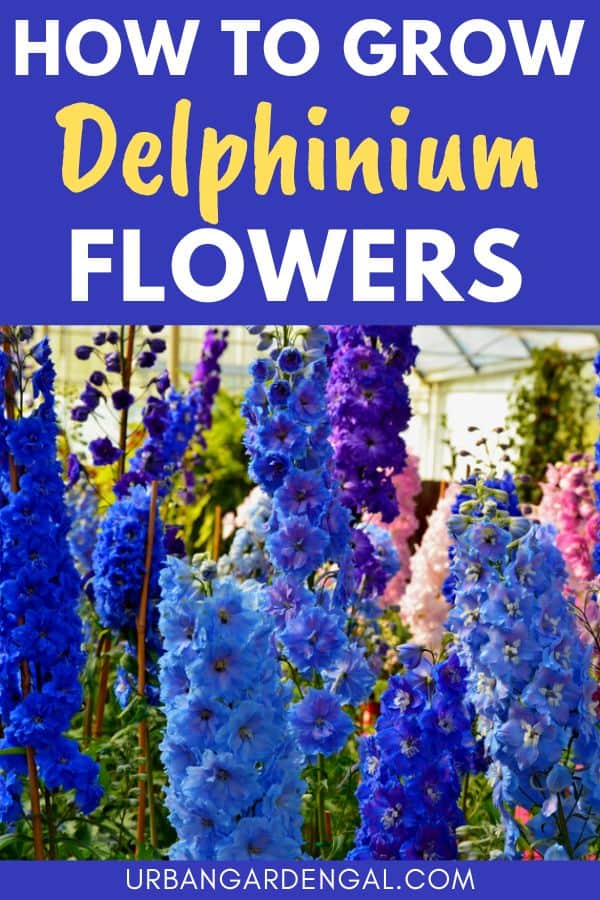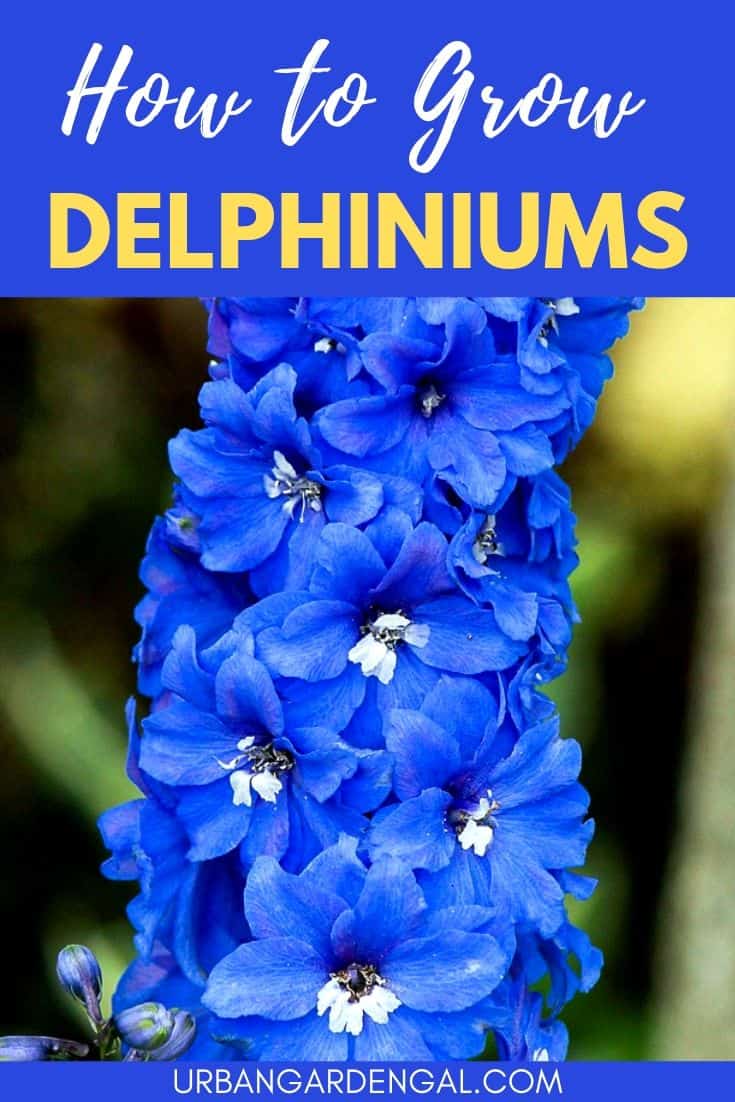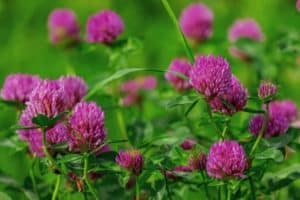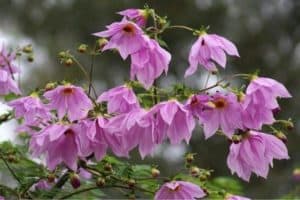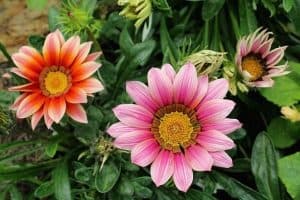Tips for planting, growing and caring for Delphiniums
Delphiniums, also known as Larkspur, are tall perennials with beautiful spikes of colorful flowers.
The most common color is blue, but they’re also available in purple, pink and white varieties.
Delphiniums are great for attracting butterflies, bees and hummingbirds to your garden and they’re resistant to rabbits and deer.
This post about growing Delphiniums contains affiliate links. Please read the disclosure for more info.
Delphiniums (Delphinium elatum) are part of the Ranunculaceae family and are native to the Northern hemisphere. [1]
They prefer moist, cool summers and don’t do well in hot, dry weather.
Delphiniums can be tricky to grow but they’re popular perennial flowers that look great next to fences and along the back of borders and garden beds.
HOW TO GROW DELPHINIUMS
Best Soil for Delphiniums
Delphiniums grow best in rich, fertile soil with lots of organic matter and good drainage.
How much sunlight do Delphiniums need?
Delphiniums prefer to grow in a position that is in full sun or partially shaded in the afternoon, especially in hot areas.
How long do Delphiniums take to bloom?
Delphiniums begin to flower in about 3 to 4 months. They bloom from early to mid-summer and often flower again in late-summer or early fall.
How tall do Delphiniums grow?
There are many different varieties of Delphiniums that can grow between 2 to 6 feet (60 to 180 cm).
Taller varieties may require staking, especially when there’s heavy rain or wind. The stems are hollow and can break easily.
RELATED: 10 Purple Flowering Shrubs
How much space is needed between plants?
Each plant should have at least 12 inches (30 cm) space in all directions.
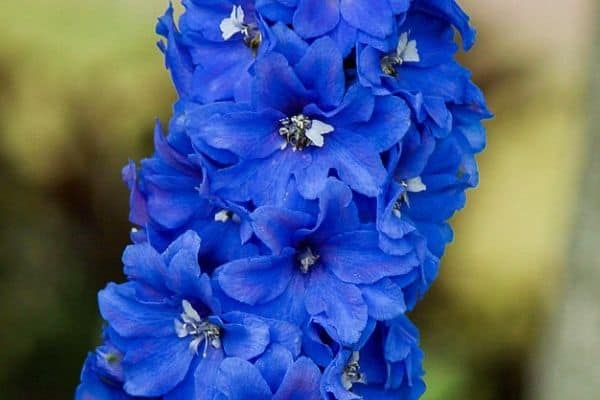
Growing Delphiniums from seeds
Delphinium seeds can be started indoors about 8-10 weeks before the last frost and transferred to the garden in spring.
Soaking the seeds before planting can improve the germination rate. Cover seeds with only one-eighth inch (3 mm) of soil and keep the potting mix moist but not too wet.
The seedlings will emerge in 21 to 28 days and can be transplanted when the plants have two sets of leaves.
Seeds collected from hybrids growing in the garden may not produce plants that flower true to color.
Delphiniums don’t always bloom in their first year.
RELATED: 10 Easy Annuals To Grow From Seed
Delphinium varieties to try in your garden
Growing Delphiniums from cuttings
Delphiniums can also be propagated from stem cuttings taken in spring before flowering.
Watering Delphiniums
Delphiniums need to be watered regularly throughout summer, especially in hot weather. The soil should not dry out too much between waterings.
A layer of mulch helps to retain moisture and keep roots cool.
Fertilizer for Delphiniums
A liquid fertilizer can be applied to your Delphiniums every 2 to 3 weeks.
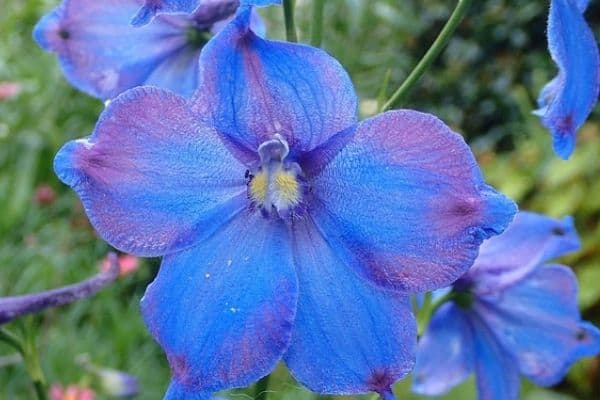
Pests & Diseases
Delphiniums can be affected by slugs, powdery mildew, bacterial and fungal spots and root rot.
Pruning Delphiniums
Regular deadheading by cutting back old flower spikes will keep the plants looking tidy and encourage new growth.
After the delphiniums have finished blooming, the flower stalks can be cut back to ground level, and new, smaller, flower stalks will grow.
Dividing & Transplanting Delphiniums
Delphiniums should be divided every 2 to 4 years by separating the clumps.
The new little plants growing around the outside of the clump can be replanted and the old center part of the plant can be discarded.
Important Note: Delphiniums are toxic and can cause severe discomfort to humans and animals if they are ingested.
It’s a good idea to wear gloves and long sleeves when working with delphiniums.
Companion Planting for Delphiniums
Delphiniums look great at the back of a garden bed or alongside a fence with shorter plants in contrasting colors in front.
Some common companion plants include Foxglove, Echinacea, Phlox and Lilies. [2]
Harvesting and Using Delphiniums
Delphiniums are beautiful cut flowers and look impressive as part of floral arrangements. They’ll last up to 7 days in a vase.
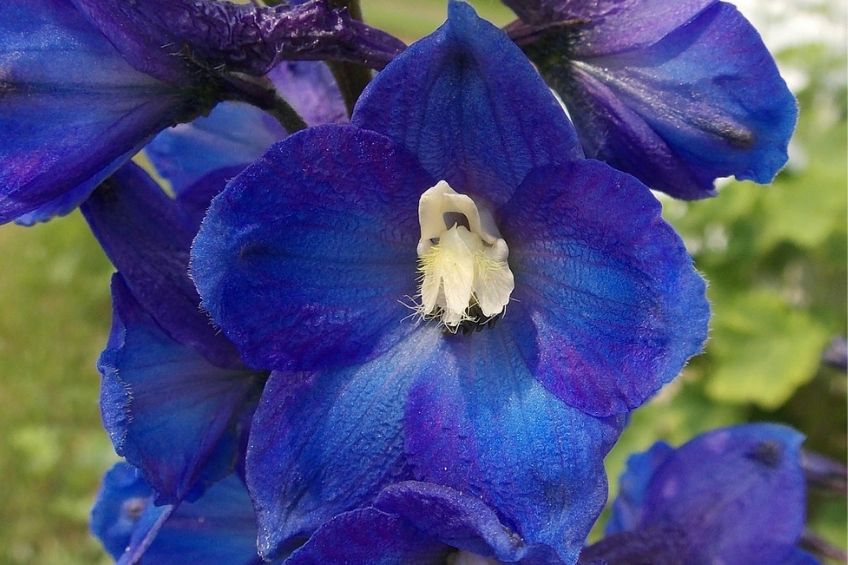
COMMON QUESTIONS ABOUT GROWING DELPHINIUMS
Can Delphiniums grow in a container?
Smaller varieties can work in containers but the larger plants will not bloom in containers.
Can Delphiniums grow in the shade?
Delphiniums are best grown in full sun to partial shade but they will require afternoon shade in warmer climates.
Are Delphiniums frost tolerant?
Delphiniums are hardy and will tolerate frost.
How do you care for Delphiniums over winter?
After the first thick frost, cut the plants down to 6 to 8 inches (15 to 20 cm) and apply mulch to protect the plant over winter.
Remove dead leaves from around the plants to discourage disease and pests.
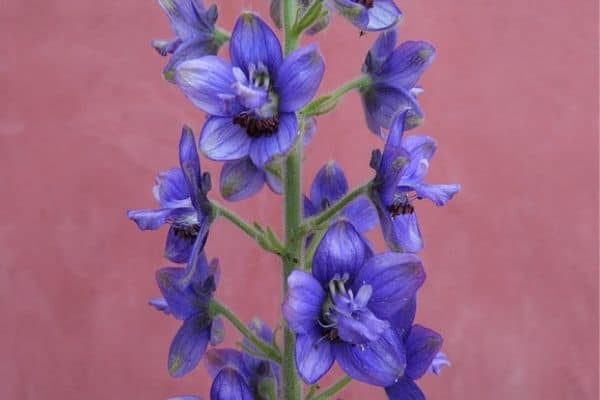
Why do Delphinium leaves turn yellow?
When Delphinium leaves are turning yellow it can be a sign of highly alkaline soil.
Iron deficiency can result when the plants are grown in alkaline soil because they absorb iron best when soil pH is between 5.0 and 6.5.
Manganese and zinc deficiencies can also cause yellowing of the leaves. [3]
Where Do Delphiniums grow?
Delphiniums grow best in areas with cool summer temperatures. In warmer climates, delphiniums will require afternoon shade and only grow as annuals.
Final Thoughts
Delphiniums can be tricky to grow, but their beautiful tall flowers make it worth the effort.
With the right soil preparation, regular fertilizer and deadheading, you can have gorgeous Delphiniums growing in your garden.
Here’s a quick video that explains more about growing Delphinium flowers.
RELATED ARTICLES
Have you tried growing Delphiniums? Let me know in the comments below.
Are you on Pinterest? I have boards dedicated to Flower Gardening and Gardening Tips that you may enjoy. You can also find me on Facebook.
